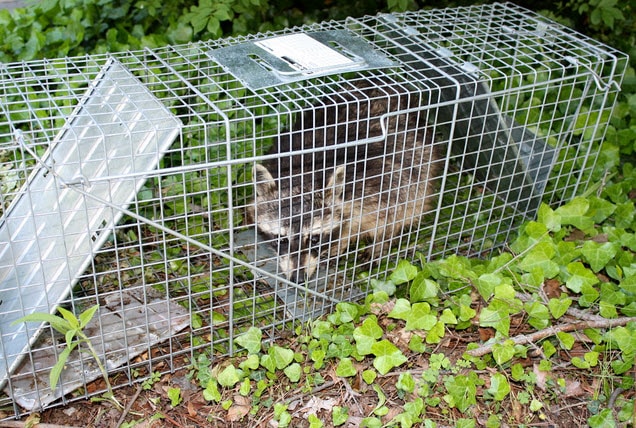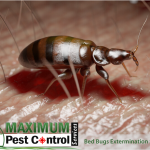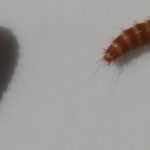
What Is Humane Wildlife Trapping and How Does It Work?
How Does Humane Wildlife Trapping Work?
Ever wondered how we deal with unwanted critters without causing harm? Welcome to the world of humane wildlife trapping. It’s a game-changer in pest control, putting animal welfare front and centre.
Gone are the days of harsh methods that hurt or kill. Modern trapping is all about respect for nature. We’ve got smart ways to catch and release wild animals safely. No pain, no stress – just effective solutions.
This approach isn’t just kind; it’s smart too. It keeps ecosystems in balance while solving human-wildlife conflicts. Curious about how it all works? Stick around – we’re diving deep into the ins and outs of humane trapping.
What Is Humane Wildlife Trapping?
Humane wildlife trapping is all about respect for animals. It’s catching critters without hurting them. Think of it as giving unwanted guests a free ride to a new home.
These traps are designed to be kind. They don’t harm or kill the animals. Instead, they safely contain them for relocation. It’s like booking a wild animal a one-way ticket out of your space. This method works for raccoons, squirrels, and other furry intruders.
But trapping is just part of the deal. You need to know where to release the animals. It’s crucial to choose a spot that’s good for them and follows local laws. Humane trapping also means checking traps often. You don’t want to leave an animal stuck for too long. It’s about finding a balance between your needs and the animal’s welfare.
Understand how humane live trapping works
Live traps work by appealing to an animal’s natural instincts. They’re like comfy holding rooms with tasty bait. The critter walks in, looking for a snack or shelter.
Once inside, a door snaps shut. It’s quick and doesn’t hurt. The animal is safe but can’t escape. These traps come in different sizes for various wildlife. They’re like custom-made wildlife hotels.
Placement is crucial. You need to think like the animal. Where do they hang out? What do they love to eat? It’s a bit of wildlife detective work. Set the trap where the critter feels safe. Camouflage it with leaves or twigs. Make it blend in. The goal? Create an irresistible pit stop for your unwanted guests.
Advantages of Humane Wildlife Trapping
Humane trapping keeps wildlife safe and sound. It benefits both people and animals. No harm done, just a change of address for the critters.
This method avoids the mess and stress of lethal traps. No blood, no fuss. It’s easier on everyone’s conscience too. You’re solving your problem without hurting the animal. It’s like giving wildlife a second chance.
Humane trapping also helps maintain local ecosystems. Moving animals preserves the balance of nature. It’s better than killing, which can disrupt food chains. Plus, it’s often more effective long-term. Remove one animal lethally, and another might move in. Humane trapping lets you address the root cause of wildlife problems.
What to Consider When Live Trapping
Live trapping isn’t a walk in the park. It needs planning and care. First, check local laws. Some places have strict rules about trapping and relocating wildlife. Keep yourself out of legal problems with the law.
Think about the animal’s welfare too. How often will you check the trap? What if it rains? You need a plan. Trapped animals can get stressed or hurt if left too long. It’s like being responsible for a temporary pet.
Consider where you’ll release the animal. It needs to be far enough away so it won’t come back. But not so far that it’s lost in unfamiliar territory. The spot should have food, water, and shelter. Remember, you’re not just moving a problem. You’re finding a new home for a living creature.
Ethical Foundations of Humane Wildlife Trapping
Humane trapping rests on a simple idea: all life has value. It’s about respecting nature, even when it’s inconvenient. We share this planet with wildlife. Sometimes our paths cross in messy ways.
This approach balances human needs with animal welfare. It’s a middle ground between doing nothing and harsh methods. Humane trapping says we can solve problems without cruelty. It is similar to being a good neighbour to the natural world.
Ethics also guide how we handle trapped animals. Quick release is key. Minimizing stress matters. It’s not just about catching them, but caring for them too. This mindset extends to release locations. We must consider the animal’s chances of survival. It’s a responsibility that goes beyond our own backyards.
Wild Life Control Strategies
Wildlife control isn’t just about trapping and removal. It’s a whole bag of tricks. The Master Key? Prevention. Stop critters from moving in before they even think about it.
Here are some top strategies to keep wild animals at bay:
- Seal points of entry: Look for flaws and gaps in your house. Patch them up pronto.
- Manage trash: Use sturdy, locking bins. Keep ’em clean to avoid tempting smells.
- Takeout food sources: Avoid leaving pet food out in the open. Pick up fallen fruit.
- Trim trees and bushes: Keep branches away from your roof and walls.
Sometimes, you need to get creative. Loud noises, bright lights, or even certain smells can deter animals. But be careful. Some methods might bug your neighbours too.
Remember, different animals need different approaches. What works for raccoons might not faze a family of skunks. Do your homework on local wildlife. Knowing your “enemy” is half the battle in keeping them out.
Lastly, think long-term. Quick fixes rarely stick. Invest time in making your property less appealing to wildlife overall. It might take effort, but it pays off in peace of mind.
Monitoring and Handling Trapped Animals
Animals often get stuck in weird places, from attics to chimneys.
Dealing with trapped animals needs a gentle touch. First, stay calm and keep your distance. Wild animals get scared easily. If they feel threatened, they can snap. Look for signs of distress, like unusual noises or frantic movement. Don’t try to handle the animal yourself. That’s a job for the pros.
Call animal control or a wildlife expert right away. They know how to safely remove trapped animals. While waiting, keep pets and kids away from the area. If possible, block off escape routes to other parts of your home. Remember, the goal is to help the animal without anyone getting hurt.
Addressing the Root Cause
Wildlife invasions don’t just happen out of the blue. There’s usually something attracting critters to your pad. Take a good look around. Are there easy food sources lying about? Open trash cans, pet food left outside, or overripe fruit on trees can be irresistible to hungry animals.
Water sources are another big draw. Leaky pipes, bird baths, or even clogged gutters can turn your yard into a watering hole. Fix any leaks and consider moving water features away from your home. As for those gutters, regular cleaning isn’t just for looks. It prevents pests from settling down.
Don’t forget about cozy shelter spots. Woodpiles, dense shrubs, and cluttered areas make great hiding places. Keep your yard tidy and trim back overgrown plants. Consider using motion-activated lights or sprinklers in problem areas. These simple changes can make your property much less appealing to unwanted guests.
Patience: A Virtue in Wildlife Encounters
Dealing with wild animals takes time. You can’t just shoo them away and expect instant results. Each critter has its own quirks and habits. Some might scram right away, while others dig their heels in.
Remember, these animals aren’t trying to bug you on purpose. They’re just following their instincts. Food, shelter, safety – that’s all they’re after. Understanding this can help you stay calm when facing a stubborn visitor. Deep breaths go a long way.
If an animal keeps coming back, don’t lose heart. Finding the ideal answer could need several attempts. Keep at it with different deterrents. Try changing things up in your yard. Sometimes, a new approach does the trick. Persistence pays off when it comes to wildlife management.
Final Thoughts by Maximum Pest Control
Humane wildlife trapping puts the animal’s welfare first. It’s all about catching critters without harming them. The goal? Safe removal and relocation. No muss, no fuss.
Pros use special traps designed for specific animals. These gadgets lure animals in gently. Once inside, the door shuts. The animal stays put until help arrives. It’s stress-free for both the critter and the homeowner.
After trapping, experts handle transportation carefully. They release animals in suitable habitats far from homes. This method solves your problem without hurting wildlife. It’s a winner for everyone involved. Remember, always call pros for safe, humane wildlife removal.







